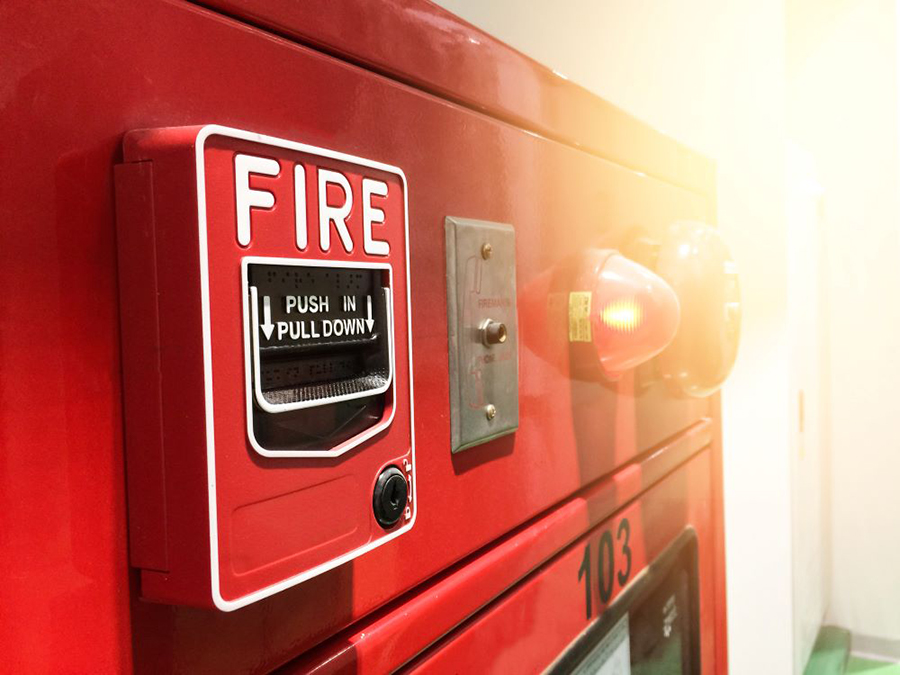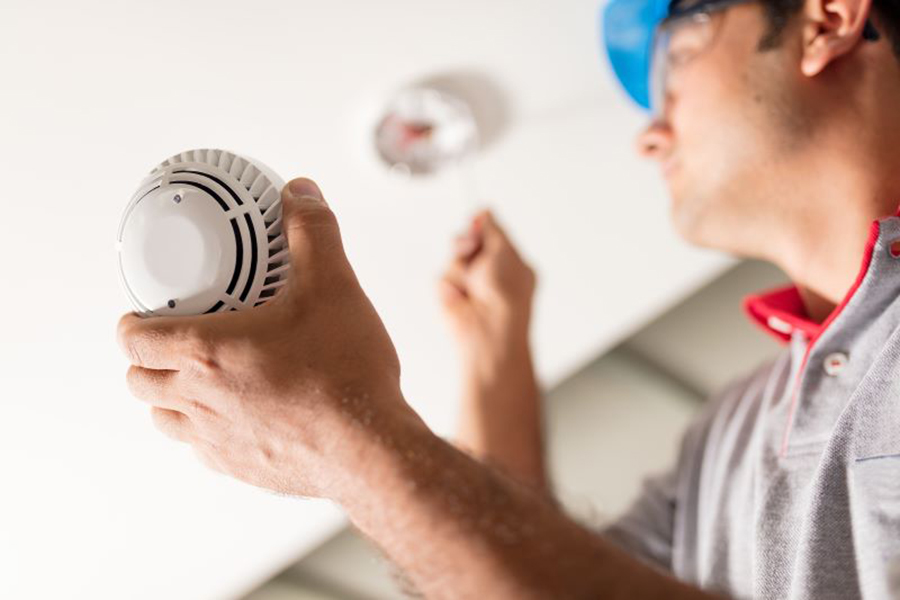FIRE ALARMS and FIRE DETECTION SYSTEMS
Your Trusted Partner in Protection
Fire Alarm Systems
Fire Detection and Notification Systems are a critical part of your building’s Life Safety infrastructure. These systems are designed to detect the presence of fire through sensors and alerts occupants and/or authorities promptly via an alarm or notification system. This enables occupants and authorities to react swiftly to mitigate risks and ensure safety.
Oliver’s expert Fire Alarm team creates tailor-made solutions to meet any of your installation challenges. Keep your buildings protected with Oliver, Your Trusted Partner in Protection.
- New Construction Project Installations
- Integration into existing Fire Alarm Systems
- Additions, Add-on or Modifications to accommodate layout changes
- Engineering Consultation to assist with design concepts
- Inspections, Testing and Maintenance
- Monitoring Solutions and Budget Friendly Preventive Maintenance
Oliver’s team of NICET-certified fire alarm technicians provide a comprehensive range of services, ensuring your projects are completed to the highest standards and maintained for ongoing code compliance. With expertise in installation, repair services, testing, inspection and maintenance, we deliver peace of mind for your fire safety needs.

Types of Fire Alarm Systems:
Initiating devices are designed to sensor and send necessary signals to your main fire alarm control panel. A signal is then relayed to the signaling devices, such as horns and strobes, which provide adequate time needed for your occupants to escape your building quickly and safely.
An addressable fire alarm system identifies individual devices, such as detectors or pull stations, with unique addresses. This unique address allows precise fire location detection, efficient maintenance and quick response in emergency situations, enhancing overall safety and system management.
A wireless fire alarm system eliminates the need for hardwiring, enabling quick installation and flexibility in retrofitting or temporary setups. It utilizes wireless communication between devices and the fire alarm control panel for reliable fire detection and notification, enhancing overall safety and system adaptability.
A hybrid fire alarm system combines features of conventional and addressable systems, offering flexibility in device connectivity. It integrates both types of detection methods for tailored fire detection, identification and notification, suitable for diverse building layouts and evolving safety needs.
A voice evacuation system provides audible instructions during emergencies, guiding occupants to safety with clear and informative messages. It enhances evacuation efficiency, reduces panic, and ensures effective communication in critical situations, contributing to overall life safety.
An integrated fire alarm system merges with building systems such as HVAC and Access Control for comprehensive safety management. It streamlines operations, enhances response coordination, and maximizes overall efficiency in fire detection, notification and evacuation, ensuring robust protection.
Detectors that are a part of a pre-action system are activated by heat or smoke which then sends a signal to a solenoid valve. This allows for the release of primed air held within the priming chamber allowing actuation of the valve to open and water to being priming the fire sprinkler system. There are two types of Pre-action Systems:
A dry flame detection system employs advanced technology to detect flames in hazardous environments without using water. It offers fast and reliable fire detection, ideal for protecting sensitive equipment and preventing false alarms, ensuring optimal safety.
Flame detectors provide a full range of capabilities that are able to read ultraviolet, infrared and combined spectra. Oliver’s experience in airplane hangars, fuel transfer stations, and other high value infrastructure will provide you with the best fit systems compatible with the classification of your specific hazard.
- Aircraft Hangers
- Chemical Processing Plant
- Oil Refineries
- Waste Management Facilities
- Hazardous Material Storage Areas
A gas detection system monitors for hazardous gases, promptly detecting leaks or emissions to prevent accidents. It employs sensors and alarms for early warning, ensuring worker safety, environmental protection and regulatory compliance. Oliver has a wide range of experience with gas detection systems from carbon monoxide detection, ammonia detection in process plants and hydrocarbons in fossil fuel plants.
- Industrial Manufacturing Plants
- Chemical Processing Plant
- Commercial Restaurant Kitchens
- Laboratories
VESDA stands for Very Early Smoke Detection Apparatus. VESDA is a powerful system in early detection of fires in their incipient fire stage. It does this through a series of sniffer ports that take interval air quality readings and monitor their particle density changes.
Types of Applications for this system include:
- Data Centers
- Server Rooms
- Clean Rooms
- Telecommunication Centers
- Medical Facilities
- Power Generation Plants
- Museums
Oliver designs and installs Emergency Communications Systems (ECS) and Mass Notification Systems (MNS) that broadcast live, up-to-the minute emergency information to everyone in a building, campus, or multiple facilities spread across a city, state, even the globe, to help prevent injuries and save lives.
Nurse call & rescue assistance stations serve as vital communication tools in healthcare settings, enabling patients to summon assistance from nurses or caregivers, fostering a safe environment where timely assistance is readily accessible.
Typically, these stations consist of a button or pull cord that patients can activate to send a signal to a central monitoring system. Once activated, the system notifies nurses or caregivers via alarms, lights or electronic displays, prompting them to respond promptly to the patient’s request or emergency.
Do You Have an Upcoming Fire Alarm Project?
To have OliverFPS bid on your next project or to request a proposal for installing, repairing, modifying or inspecting your building’s fire alarm system, contact us by CLICKING HERE





